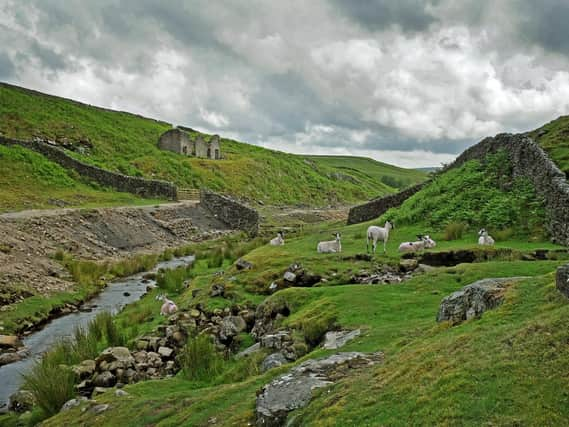A glimpse into the lead mining heritage of the Yorkshire Dales


Not far away are the honeypots of Grassington and Hebden, popular with day trippers, walkers and tourists keen to explore the area’s rugged beauty.
There is, though, another chapter to the story hinted at by this photograph in the ruins of the stone building in the background, a relic of the lead mining industry. In centuries gone by, hardy men toiled to make a living from this landscape, hewing lead ore from the unforgiving ground.
Advertisement
Hide AdAdvertisement
Hide AdLead mining in the 18th and 19th centuries left its mark on the landscape, and several ruined mine workings can still be seen in the uplands..
The geology of upland areas of Britain – where the movement of fault lines causes limestone beds to crack – creates deposits of lead ore.
The mineral has been mined since Roman times, when it was even sent back to Rome and used in building projects.
By the 18th century, Britain was the biggest lead producer in the world, and prospecting in the Dales reached fever pitch. Most of the labour was manual and miners bargained with landowners for access to the lead ore deposits.
Advertisement
Hide AdAdvertisement
Hide AdThe end of the industry came at the start of the 20th century, when foreign competition began to undercut prices.
The last lead mine in the Dales closed in 1912, but many of the buildings and workings, such as peat houses, smelting mills and stores, still remain.
On the surface, smelting mills and chimneys were constructed to process the ore which was then converted ready for sale on the commercial market.
Several of these chimneys (and the flues built to channel hot gases into them) are still standing today – remnants of which can be seen in places like Malham Moor and Grassington Moor.
Advertisement
Hide AdAdvertisement
Hide AdThey are a reminder, too, that Yorkshire’s industrial heritage is not confined to our bustling towns and cities, but can be found here in the most picturesque of places.
Technical details, shot on a Fujifilm X-T1 18-55mm lens with an exposure of 1/250th @ f5.6, 400ISO.
Comment Guidelines
National World encourages reader discussion on our stories. User feedback, insights and back-and-forth exchanges add a rich layer of context to reporting. Please review our Community Guidelines before commenting.